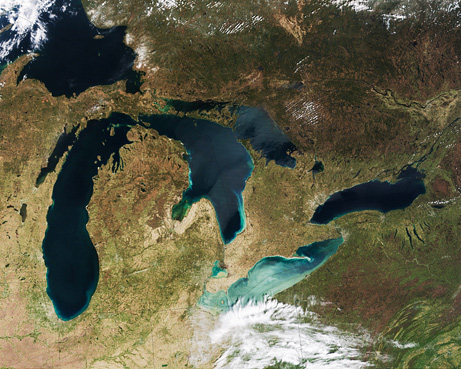
© Jacques DescloitresNorth America's Great Lakes (pictured in an aerial shot on May 4, 2002) were created during glacial retreats and advances over millions of years—including the brief cold snap called the Younger Dryas, which occurred about 12,900 years ago.
A comet impact didn't set off a 1,300-year cold snap that wiped out most life in North America about 12,900 years ago, scientists say.
Though no one disputes the occurrence of the frigid period, known as the Younger Dryas, more and more researchers have been unable to confirm a 2007 finding that says a collision triggered the change.
The earlier study says the drop in temperature, plus fires from the purported impact, wiped out sabertooths, mastodons, and other giant animals, and may have caused the decline of an early civilization known as the Clovis culture.
The 2007 research was based on a combination of archaeological artifacts and extraterrestrial magnetic grains in soil samples found in a thin layer of sediment throughout North America.
The original team, led by Richard Firestone, a nuclear chemist at Lawrence Berkeley National Laboratory, also found what he said are traces of charcoal and microscopic bits of carbon from intense fires ignited by the collision.
